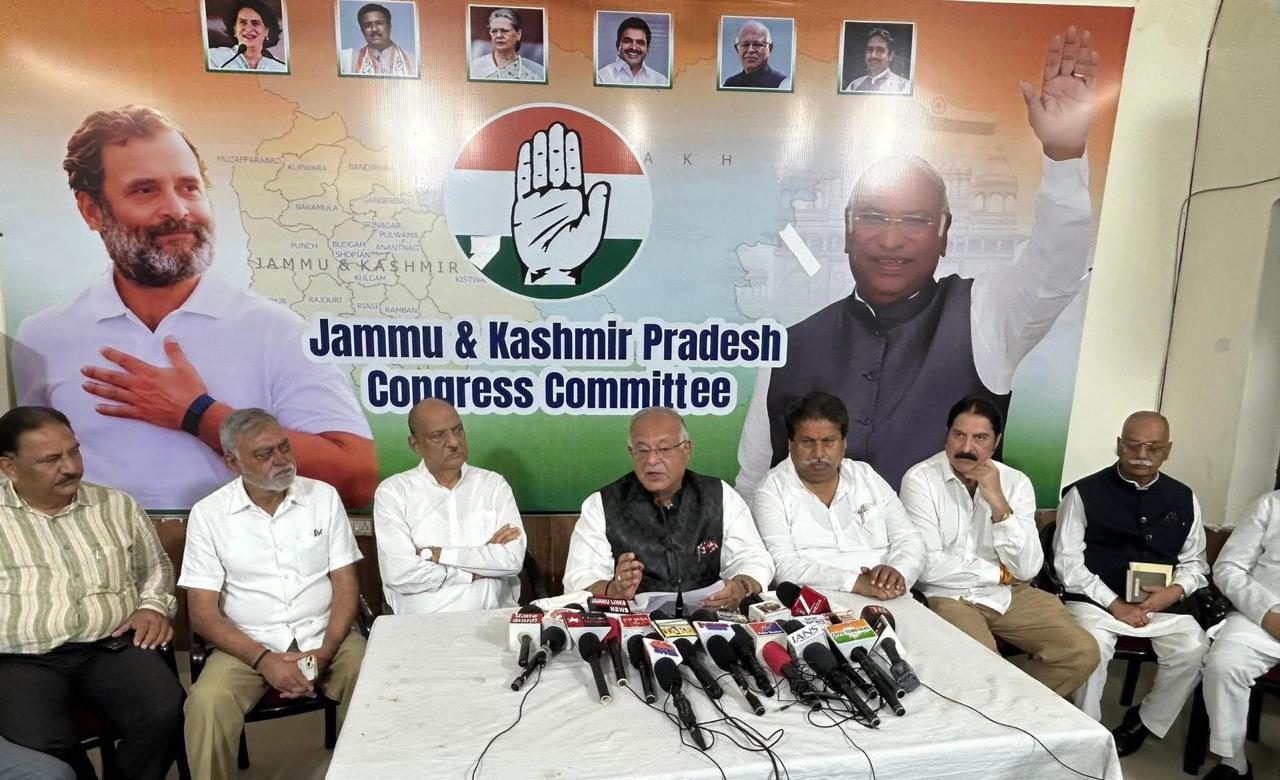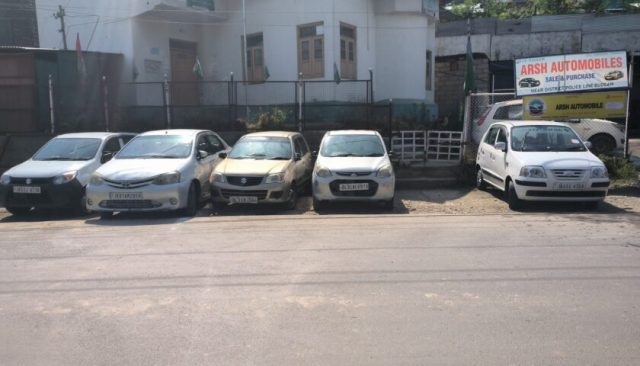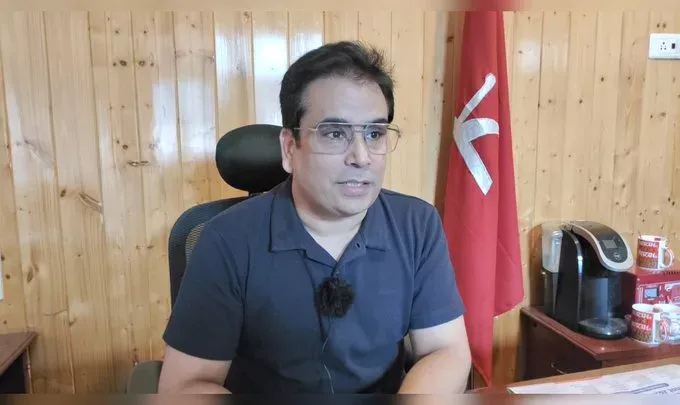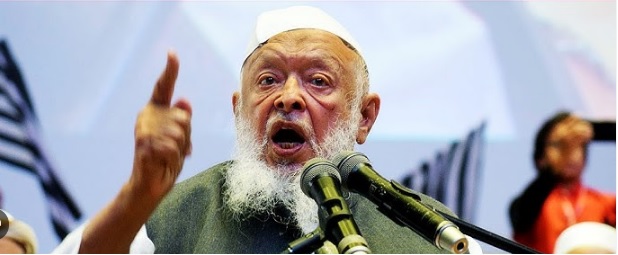A Silent Protest with a Loud Message
By: Javid Amin | Srinagar | 08 Aug 2025
In the heart of Srinagar, along the busy Moulana Azad Road, the headquarters of the Jammu and Kashmir Pradesh Congress Committee (JKPCC) has transformed into the epicentre of a new phase in the region’s political struggle. From August 9, 2025, JKPCC President Tariq Hameed Karra has been leading an 11-day relay-style hunger strike, a peaceful yet determined demand for full statehood for Jammu and Kashmir.
For the people of J&K, this is not just another protest. It is a reminder of a political identity that once was—before the historic changes of August 5, 2019, when Article 370 was abrogated, special status revoked, and the state was split into two Union Territories. While New Delhi has promised to restore statehood “at an appropriate time,” many here believe that “appropriate” has taken too long to arrive.
The Congress’s latest move under the Hamari Riyasat Hamara Haq campaign—translated as “Our State, Our Right”—is both symbolic and strategic. It follows earlier mobilisations like Srinagar Chalo, Jammu Chalo, and Delhi Chalo rallies. But this hunger strike, staged over 11 days in Srinagar and Jammu, raises the stakes. It’s no longer just speeches and placards—it’s the politics of silence, endurance, and moral pressure.
The Political Backdrop – How We Got Here
To understand the hunger strike’s urgency, we must revisit the last six years. On August 5, 2019, the Government of India revoked Article 370 and Article 35A, dismantling J&K’s constitutional autonomy. The region was bifurcated into the Union Territories of Jammu & Kashmir and Ladakh.
Why August 5 Became a “Black Day” for Congress
For Congress and other opposition parties in the region, August 5 is no cause for celebration. Instead, it’s observed as a Black Day—a symbolic act of mourning and resistance. Black flags, sombre gatherings, and silent marches mark the anniversary each year. In 2025, the date gained even greater significance as Congress escalated its campaign.
The Promise of Statehood – Still in Limbo
The Union Government, led by the Bharatiya Janata Party (BJP), has repeatedly promised to restore statehood. However, no clear timeline has been given. Instead, the political discourse has shifted to delimitation exercises, electoral roll revisions, and assembly election speculations—none of which guarantee immediate restoration of full constitutional powers to the region.
“Hamari Riyasat Hamara Haq” – Building Momentum
The Hamari Riyasat Hamara Haq movement didn’t emerge overnight. Over the last few months, it has been gathering pace:
-
Srinagar Chalo: Rallies and conventions in the Kashmir Valley.
-
Jammu Chalo: Mobilisation of people from Jammu province.
-
Delhi Chalo: Taking the demand to the national capital.
Each phase was designed to expand the movement’s reach—from local streets to Parliament’s steps.
Anatomy of the Hunger Strike
Relay-Style Format
Unlike an indefinite solo fast, the JKPCC has opted for a relay hunger strike. Each day, district presidents and coordinators from Kashmir province take turns joining the fast alongside Karra. This ensures participation without severe health risks and symbolises collective commitment.
Duration & Schedule
-
Start Date: August 9, 2025 – Srinagar Congress HQ
-
End Date: August 20, 2025
-
Jammu Phase: Begins August 10 at the Maharaja Hari Singh statue site, Tawi Bridge.
-
Pause Dates: August 15 and 16 (likely due to Independence Day observances).
Why the Relay Style Works
The method allows:
-
Wider Participation: Leaders from different districts get direct involvement.
-
Sustained Media Coverage: Daily changes in participants keep the event newsworthy.
-
Safety: Minimises health risks while maintaining symbolic value.
Karra’s Message to New Delhi
Tariq Hameed Karra, a veteran political figure, has framed the hunger strike as “a peaceful reminder” to the Government of India of its statehood commitment.
In his own words:
“We will not accept any arrangement that grants statehood to Jammu while keeping Kashmir as a Union Territory. Such a move will trigger massive public pressure and global reaction.”
This warning carries political weight. A split approach would deepen the sense of alienation in the Valley and risk polarising the two regions further.
Karra also linked the hunger strike to the Congress’s larger mission—to restore J&K’s political dignity to the same level as other Indian states like Gujarat or Maharashtra.
Public and Political Reactions
Support from Grassroots
Local Congress workers, civil society groups, and even non-political citizens have shown solidarity—some joining the fast for a day, others organising candlelight vigils at night.
Media Coverage
Leading outlets have been tracking the strike, ensuring national visibility. Social media hashtags like #JKStatehood and #HungerStrike2025 are trending regionally.
Opposition Parties
While some opposition parties like the National Conference and PDP support statehood in principle, they have not officially joined the Congress protest—choosing instead to pursue parallel strategies.
Why Full Statehood Matters
Restoring statehood is not just symbolic—it has tangible governance implications:
-
Legislative Autonomy: Power to make laws on key subjects without central interference.
-
Administrative Control: Greater authority over bureaucracy and local policing.
-
Fiscal Independence: Ability to plan and spend budgets according to local needs.
-
Political Representation: An empowered assembly with real authority, not just advisory powers.
Currently, as a Union Territory with a legislature, J&K’s elected representatives operate under greater central oversight, especially on matters of security and land policy.
The Risk of a Split Statehood
Karra’s strongest warning is against a selective restoration—granting statehood to Jammu while leaving Kashmir as a Union Territory. Critics say this would:
-
Undermine the region’s unity.
-
Create a precedent for politically motivated partition.
-
Fuel mistrust and resentment between communities.
Emotional & Social Dimensions
Human Stories
From shopkeepers in Lal Chowk to farmers in Pulwama, ordinary people are engaging with the hunger strike. For many, it’s less about party politics and more about regaining a lost sense of self-rule.
Cultural Symbolism
The relay fast echoes older Gandhian methods—silent resistance as moral persuasion. In a region often defined by conflict, the image of leaders fasting in peace sends a powerful counter-narrative.
The Road Ahead
The hunger strike is set to conclude on August 20, 2025. But Congress leaders say this is just one step. Karra has pledged to:
-
Take the statehood demand to Parliament.
-
Continue mobilising across both provinces.
-
Coordinate with national Congress leadership for broader political pressure.
A letter from Mallikarjun Kharge and Rahul Gandhi to PM Modi earlier this year urged immediate restoration—adding weight to the regional effort.
Bottom-Line: A Fast That Speaks Volumes
The hunger strike for statehood in J&K is more than a protest tactic. It is a statement—a reminder that democracy is not just about elections, but also about respecting promises and restoring trust.
For 11 days in August 2025, in the shade of the Congress headquarters and under the eyes of both supporters and sceptics, Tariq Hameed Karra and his colleagues have chosen silence over slogans, discipline over chaos, and moral pressure over force. Whether New Delhi listens remains to be seen—but the people of Jammu and Kashmir have made their message clear:
Statehood is not a favour to be granted—it is a right to be restored.




